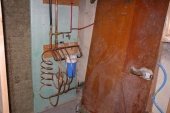I am entering into my second full season as a full-time market gardener. While establishing infrastructure and perennial crops, I need to establish more space to grow annuals for cash-flow. The short of it is, I need more beds, better beds, fast and cheap. I have a walk behind tiller (not a fancy bcs just yet), a tractor with a regular plow (no discs or tillers), a broad fork, flame weeder, and plenty of hand-tools. So far, I have been just tarping beds, broadforking, scuffling hoe-ing, adding compost, shallowtilling, raking, flameweeding and planting. Or some variation of something like that. This makes a good bed, I have pretty great soil to start with, but it's a lot of work and the beds really aren't "raised". I imagine that there is a good way to incorporate the soil from the paths into my beds, or at least the new ones I make. I also imagine that over time with the addition of more compost etc, the beds may get more "raisy". Anyway, I am looking for some good advice to help me open up some more beds and/or improve my existing beds without working crazy hard physically (like I did with the first ones) or buying more equipment. Oh, and I need them to be plant-able in one year or less. And also a million dollars... Any thoughts? Thanks!





